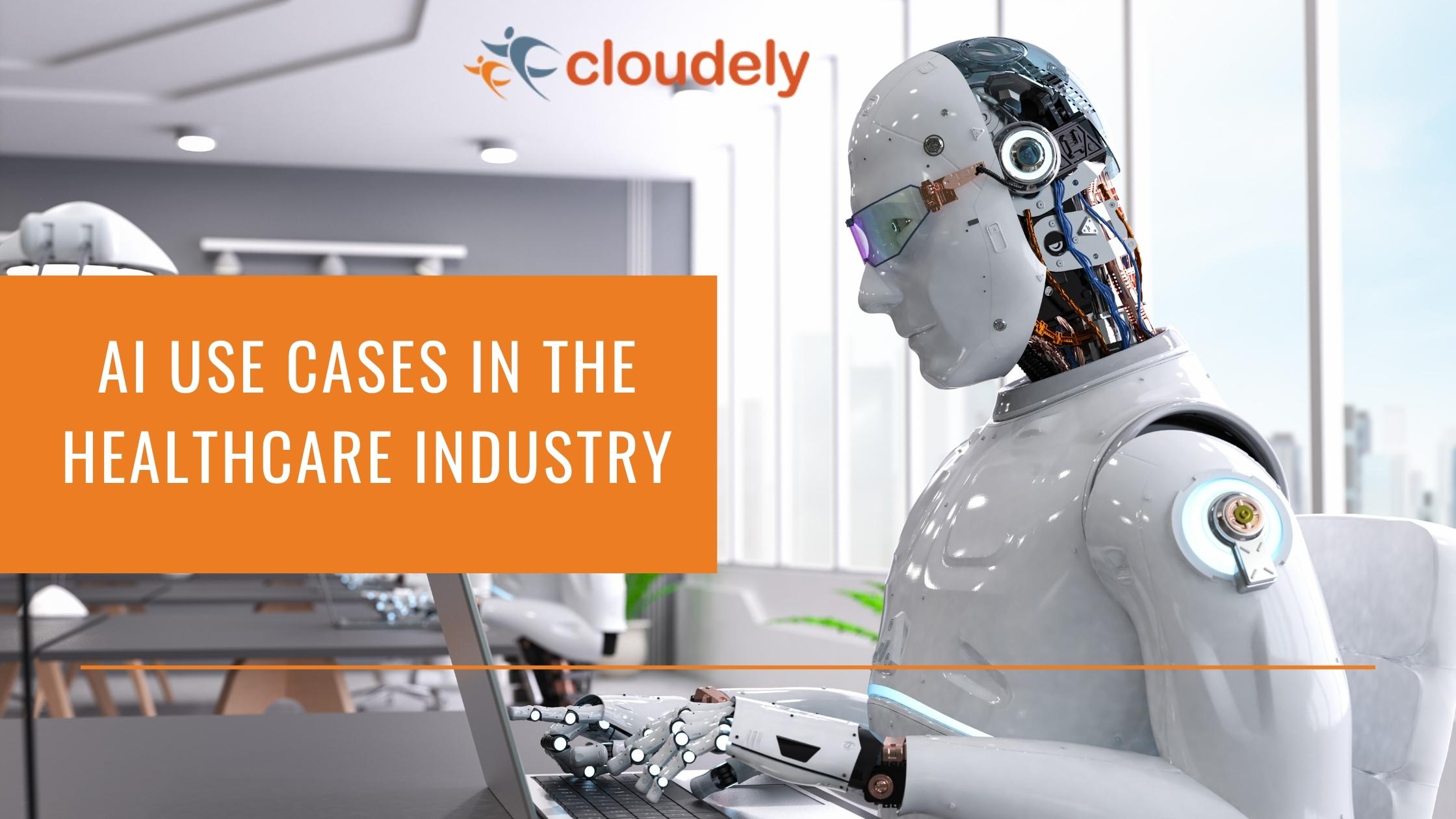The healthcare industry is rapidly adopting artificial intelligence (AI) and machine learning to improve patient outcomes, enhance operational efficiency, accelerate research, and reduce costs. From leveraging data to drive personalized medicine to automating mundane tasks, AI is transforming health in powerful ways.
Artificial intelligence is being applied across the healthcare continuum to improve various areas. From aiding disease diagnosis using medical scans and images to streamlining administrative processes, AI shows great potential to augment human abilities and make quality care more affordable and widespread. Some key use cases where AI is demonstrating value include:
Table of Contents
Automated Analysis of X-ray and CT scans for lung diseases
X-rays and CT scans provide vital visual information to help doctors diagnose lung conditions like pneumonia, tuberculosis, lung cancer, or COVID-19. However, interpreting these complex medical images requires extensive training and experience. AI-powered algorithms can detect subtle patterns in scans that may elude the human eye.
For instance, researchers developed an AI system to screen COVID-19 patients using chest X-rays. It distinguished between two COVID phenotypes using principal component analysis and clustering techniques. This could help doctors select appropriate treatments based on whether patients need mechanical ventilation or if it may cause lung injury.
Another AI solution accurately classified different pneumonia types from X-rays – including COVID-19 – achieving 92.9% sensitivity. As more patient data becomes available, such technologies can be refined to boost diagnosis rates for all lung diseases.
Skin Cancer Detection from Dermatology Images
Spotting early-stage melanoma is challenging as malignant moles can resemble benign lesions. AI deep learning models can analyze dermatology images to assist clinicians in skin cancer screening and diagnosis.
A convolutional neural network (CNN) assessed non-pigmented skin cancer images, matching the performance of dermatologists. The AI even exceeded beginner and intermediate doctors. Another AI model using InceptionV4 architecture diagnosed 100 test cases from images alone. Its accuracy aligned with two expert dermatologists, demonstrating the technology’s potential to enhance clinicians’ abilities.
However, more research is needed to prove these tools can provide reliable results across diverse real-world patient populations. As training data quality and model robustness improve, AI has immense promise to bolster dermatologists’ diagnostic capabilities and speed.
Suggested Reading: The AI Healthcare Revolution
Automated Analysis of MRIs and CT scans
Radiology AI can help extract insights from MRI, CT, and PET scans to assist in diagnoses and treatment decisions. For instance, Chinese researchers developed an AI model to detect early COVID-19 pneumonia rapid signs in CT scans, accelerating infected patient identification and isolation.
MRI brain scan analysis can also uncover complex conditions like cancer, injuries or speech disorders. Facebook and NYU Langone Health partnered on fast MRI, using AI to cut MRI scan time by 4X without compromising image quality or diagnostic value.
The FDA has approved over a dozen deep-learning radiology tools to date. The global market for AI in medical imaging is forecast to grow at a 33% CAGR from 2022-2030, reflecting rising adoption. As AI algorithms grow more powerful, radiologists can offload tedious tasks like measurements and tissue labeling to focus on high-value human judgment and care.
Enhancing Breast Cancer Detection in Mammograms
Timely breast cancer screening boosts patient survival, but increasing procedure volumes strain radiologists. AI can optimize mammogram analysis to ease this burden.
For instance, a model using neural networks flagged critical cases for immediate radiologist review by analyzing X-rays 10X faster. At a Netherlands clinic, a deep learning tool reduced the time to evaluate digital 3D mammograms by 15-20%.
A Google Health collaboration matched the accuracy of double radiologist reading in assessing 100 mammogram test cases. Most impressively, the AI reduced the workload for the second reader by 88%. As global radiologist shortages worsen, such tools could expand access to expert-level breast cancer diagnostics.
AI-Powered Analysis of Digital Pathology Slides
Digital pathology utilizes digitized microscope tissue slide images for enhanced analysis. Researchers can train AI models on annotated slide datasets to improve pathology detection and diagnosis.
For instance, an algorithm analyzing 11,000 labelled whole slide images of 32 cancer subtypes accurately classified frozen section slide samples for diseases like bladder cancer. The AI performed well on permanent slide samples, too, demonstrating versatility across specimen preparation methods.
Such tools can assist pathologists by rapidly surfacing relevant case data, easing workloads, and boosting accuracy. AI slide analysis could also expand insights into lesser-known cancer subtypes and early-stage variants.
AI-Assisted Robotic Surgery
Robotic surgery systems featuring AI, computer vision, and robotics allow for minimally invasive procedures with greater precision and control. Unlike humans, surgical robots can operate tirelessly without fatigue.
For example, the Smart Tissue Autonomous Robot (STAR) uses near-infrared fluorescence imaging to distinguish cancerous tissue. This enables extremely precise removal of tumors surrounded by sensitive nerves and blood vessels.
Machine learning helps the DaVinci surgical robot perform sutures better than expert surgeons. AI training improves the system’s movements to sub-millimeter accuracy over time. Hospitals observed lower complications and faster patient recovery with robot-assisted surgery versus traditional methods.
Looking ahead, researchers aim to pair surgical robots with AI techniques like federated learning to enable collaborative training across institutions without compromising patient data privacy. As models gain surgical intelligence from diverse, real-world clinical datasets, surgical automation could save many more lives.
AI Chatbots for Healthcare Customer Service
Healthcare AI chatbots enable patients to conveniently interact with hospitals for their administrative needs via voice or text. These virtual assistants manage tasks like:
- Appointment booking and reminders
- Bill payment
- Insurance and payment queries
- Medication refill requests
For example, Providence Health’s Ariana chatbot handles over 80,000 patient conversations monthly, freeing staff for higher-value care.
Atrium Health’s chatbot screens patients with COVID-19 symptoms before their ER visits, accelerating diagnoses. It asks about fever, cough, exposure history, and other risk factors to assign appropriate isolation rooms. This simple triage preregistration minimizes contagion risks.
As natural language processing advances, chatbots can understand patient questions with greater nuance and accuracy. They can also analyze sentiment to gauge satisfaction with hospital experiences. End-to-end encryption ensures health data privacy.
AI-Assisted Clinical Documentation
Recording detailed, accurate clinical notes is vital but bogs doctors down in paperwork. Natural language processing (NLP) AI can automate this tedious process to free physicians for patient care.
For instance, Nuance’s AI transcribes clinician narrations into structured documentation for electronic health records. It also suggests relevant data to include, like symptoms or conditions, ensuring comprehensive reports. Doctors can review and edit before finalizing.
At Indiana University Health, Nuance cut clinician documentation time for ER visits by 45% and halved time-to-chart-closure. Meanwhile, Concord Hospital reduced phone transcription by 91% using AI speech recognition during rounds.
As voice assistants advance, clinicians can dictate patient updates hands-free during exams for faster documentation. However, hospitals must integrate NLP across their healthcare IT stacks to realize its full potential.
Conclusion
While still nascent, AI is poised to dramatically transform healthcare delivery and outcomes if challenges around data, infrastructure, and skills are addressed thoughtfully. With proper guidelines and oversight, these technologies can help boost the accessibility of critical services like cancer screening and routine appointments.
Most importantly, they stand to significantly enhance doctors’ abilities by automating documentation and assisting complex diagnostics. This would free up clinicians to devote more time where it matters most – at the patient’s bedside.






